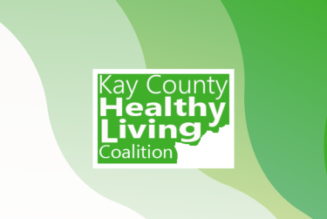
Physical and mental health is influenced by lifestyle choices people make every day. Those choices are often influenced by their built environment — the human-made conditions where they live and work. Communities and businesses can intentionally plan and create environments that make it easy for their residents, employees, and customers to make healthy choices.
Let’s look at two people who are motivated to take an evening walk. Various factors of their built environment will make these two experiences quite different.
After dinner, Jordan leaves home for a brisk walk, starting on a tree-lined street and then heading for an accessible park trail. The walk may include a stop at the corner store for some fresh produce or a chat with friends along the way.
Alex also heads out after dinner, walking on uneven sidewalks along busy streets with lots of car exhaust and few streetlights. There is no real destination, just miles of housing and commercial buildings that are closed for the day.
Jordan is more likely than Alex to get regular physical activity, which improves physical health and mental health. Jordan’s environment is built to encourage social interaction and nutritional food choices in addition to physical activity.
Ways to Improve the Built Environment
Cities, counties, and businesses can improve community health by creating environments like the one Jordan lives in.
“The built environment is generally described as the human-built infrastructure that is in one’s local environment,” said Janet Wojcik, professor of Exercise Science, Winthrop University, and fellow of the American College of Sports Medicine. “This can be buildings such as housing and businesses, streets, roads, sidewalks and other pathways like greenways, and access to open spaces like parks. All of these affect human health in that depending on how their local built environment is designed, they can either promote or hinder healthy habits such as the ability to be physically active or to purchase healthier food options.”
Green spaces, active transportation infrastructure, mixed-use development, safety measures, and inclusive design all contribute to improving community health. These concepts can be incorporated on large and small scales.
- Green spaces and health-promotion infrastructure: Green space exposure can have positive effects on heart rate, attention, mood, and physical activity. Amenities such as fitness stations, sports courts, and playgrounds encourage physical activity. Cities and counties can create parks, gardens, and other open spaces within walking distance of most residents. Employers can include opportunities for physical activity and exposure to nature in or near their offices.
“If a person can safely walk or bicycle in their neighborhood or near their workplace, that can positively influence their overall daily physical activity,” Wojcik said. “If they have access to a park or greenway within 10 minutes of their home, their physical activity can be higher.”
- Active transportation infrastructure: Communities can encourage active transportation like walking and biking by installing pedestrian-friendly sidewalks, bike lanes, and safe crossings. Businesses can install bike racks, keep sidewalks clear, and build spaces that encourage use of stairs over elevators. In addition to encouraging physical activity, active transportation like walking and biking improves air quality through reduced traffic congestion.
- Mixed-use development: The integration of residential, commercial, and community spaces promotes walkability and fosters social connections. Density, distance to non-residential destinations, and land use mix have been found to increase walking for transportation. While creating this environment is largely an urban planning exercise, businesses can intentionally move into these types of developments.
“To improve people’s health and quality of life, we must create communities that build physical activity into our daily lives,” said Dr. Shantanu Agrawal, chief health officer at Elevance Health.
- Safety measures: Feeling safe encourages outdoor activities and promotes mental well-being. Ample lighting, surveillance cameras, safe pedestrian crossings and sidewalks, air and noise pollution reduction, and crime prevention strategies can enhance people’s sense of safety.
- Inclusive design: To ensure the efforts above are most beneficial, builders and planners must consider the needs of all community members. Trails, housing, public buildings, offices, stores, and other spaces must be accessible and welcoming to people with disabilities, older adults, and a diversity of cultural experiences and backgrounds.
“There can be significant disparities in a city between the areas that have a more health-promoting built environment,” Wojcik said. “Rural areas and lower income areas tend to have a less health-promoting built environment.”
Implementing these strategies requires collaboration among community members, urban planners, architects, politicians, and other stakeholders. There are many guides, tools, and checklists available to groups who want to create healthier places to live and work.
How One of America’s Fittest Cities Does It
The ACSM American Fitness Index® ranks the 100 largest U.S. cities based on a list of wellness factors. The 2023 index ranks Arlington, Virginia, as the fittest city for the sixth year in a row.
Arlington promotes health and well-being through its built environment in many ways. Some examples:
- Arlington County maintains numerous parks and open spaces with recreational opportunities, sports fields, and trails for walking, jogging, and cycling. Because of this, 99% of residents live within a 10-minute walk of a park.
- The city has an extensive network of bike lanes, bike-sharing programs, and pedestrian-friendly streets. This includes the Arlington Loop, a 16-mile trail that connects several key locations in the county.
- Arlington has implemented smart growth and mixed-use development principles. The Rosslyn-Ballston corridor is a prime example, with residential, commercial, and retail spaces clustered around Metro stations. This transit-oriented development promotes walkability and provides convenient access to amenities and services.
- Arlington County has improved lighting and pedestrian crossings and deployed traffic calming measures, such as raised crosswalks, rumble strips, and one-way streets, to enhance safety for pedestrians and cyclists.
- Public buildings, parks, and transportation systems are designed to be accessible. Arlington County actively engages with disability advocates to ensure that infrastructure improvements are accessible for people with disabilities.
“A health-promoting built environment can be designed from scratch or redesigned,” Wojcik said. “Cities can do a lot to help make their community more walkable such as properly marking crosswalks, allowing sufficient time for pedestrians to cross intersections, evaluating ADA compliance for accessibility, and looking at routes to destinations like parks, town centers or downtown retail and restaurants. Everyone wants to live in a community that positively affects their health and quality of life.”
These examples demonstrate how Arlington strives to improve the built environment to support community health. Through green spaces, transportation infrastructure, mixed-use development, safety measures, and inclusive design, Arlington promotes an active lifestyle — which has benefits for the overall health of the people who live or work there.









